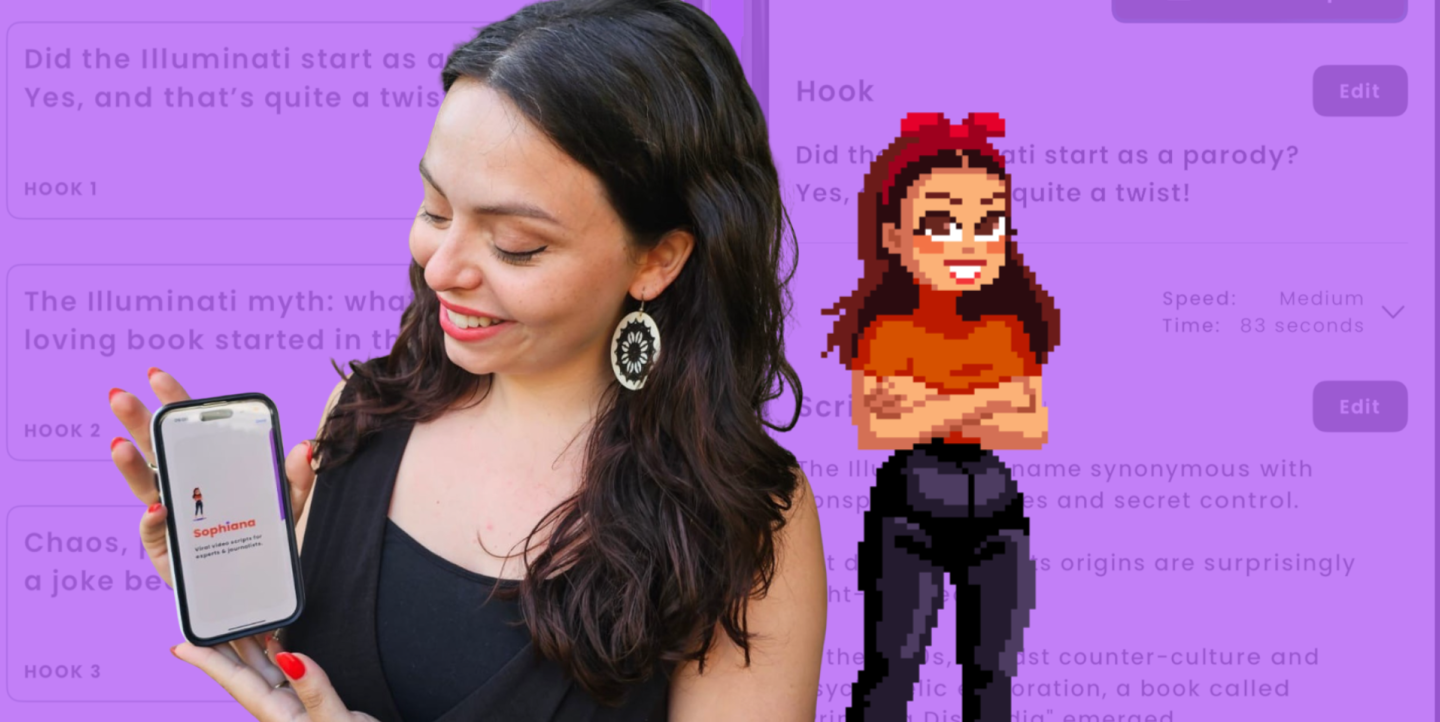I’ll never forget the day when an editor at the BBC told a 25-year-old me that journalists shouldn’t be on TikTok because “there’s so much misinformation on there.” By that point, I had maybe 10,000 followers on the platform, possibly more, and the comment stung. My TikToks, which had amplified my journalism as well as my passion for learning new languages, were well researched and I hoped the direct opposite of misinformation.
But as time went on, I realized that there was more to the comment than I’d first thought. Not only did it reveal that senior leadership can have policy-altering opinions about platforms that are based on opinion rather than fact, but that many think misinformation is a reason for journalists to avoid a platform or format, rather than saturate it.
The guiding force of my journalism throughout my entire career — beginning as a video journalist at the BBC, moving onto becoming a senior news reporter at VICE News and now as an independent creator, author and founder — has been to put audiences first. I had great training at the BBC World Service to understand where our audiences were “underserved,” which is BBC jargon for “we’re not reaching them with our work.”
Growing on digital was key to finding them, because they certainly weren’t going to find us on media formats that were declining in reach (television, radio, print). Back in 2019, TikTok was becoming enough of a zeitgeist for me to research it, and I quickly understood that this was increasingly a place where users were sharing information and high-quality content. While many media bosses kept calling it a platform for lip-syncing and dancing, I was on my way to my first 100,000 followers with news explainers and factual storytelling.
The secret sauce was never a great secret: if you study the techniques of content creators, who had zero mainstream media hangups about TikTok being an uncertain place for news content, they were always putting audience needs and interests first, allowing their own followers to direct what they may decide to cover as opposed to being governed by traditional news agendas that mainstream media were compelled to follow. Social justice and current affairs could send you viral as well as all of the fun trends and more entertainment-focused content.
@sophiasmithgaler My latest story from the coast and 👀effluent 👀 of Rosignano Solvay in Tuscany. What is going on - and why hasn’t the city hall funded this study into local pollutants and a possible link to diseases here yet 🤨 #solvay #italy #environment ♬ Creepy and simple horror background music(1070744) - howlingindicator
Most importantly, creators were speaking directly to camera, and editing in a way that would mortify a television editor; my videos today remain full of crash zooms and jump cuts. High content density to maintain viewer retention and a casualized, pitch-varying delivery like you were speaking to a friend became the way early adopter journalists like me went viral with news explainers, whether they were on-diary stories or our original reporting. Many of us unlearned scripting techniques from broadcast media and refined them for new algorithmic demands, including hooks to grab viewers within the first five seconds and adding compelling language to maintain audience interest.
It’s now 2025, and not only has every platform copied TikTok and produced their own shortform product, but social media has become fragmented. Journalists can’t tweet anymore and assume their work will be seen like they used to in the late 2010s, and perhaps more worryingly, news publishers sit at a considerable disadvantage on the social media apps that are the fastest growing sources of news. Data from the Reuters Institute of Journalism’s Digital News Report has consistently found that online influencers and personalities are far more valuable to audiences here than mainstream news brands. We are in the era of individuals conferring trust and endorsement to brands, rather than the other way around. Traditional media is losing trust and eyeballs at the same time as websites are getting fewer and fewer views, and ad revenue is evaporating.
@sophiasmithgaler The em dash. Hate it? Love it? Here’s why people are talking about it #emdash #language #ai ♬ original sound - Sophia Smith Galer
It’s why I get worried at some of the current attempts I’m seeing from newsrooms to make social video content. I see reams of newsroom video on platforms regurgitating agency copy and the same b-roll all of their competitors have also put out — offering nothing individual when we know it’s original investigations, talent and content that drive subscription growth. Social media audiences additionally want distinctive content that looks organic to the platform. Some brands like the New York Times and The Times in the U.K. now have some writers deliver explainers on camera in a YouTube-esque, high production style that can perform well, but which take a considerable amount of newsroom effort to deploy, can’t respond quickly to breaking news, and don’t look remotely organic to the platform. Other outlets do next to nothing to engage their reporters in social media video work, and simply get a roster of Gen Z journalists to present other people’s work, fostering no kind of direct relationship or transparency on stories with viewers. Crucially, all of these videos still come out under the news publisher’s name — not the journalist who, if empowered, could grow a community around their work that is actually far more likely to be seen, and supported, by personality-hungry viewers. Imagine if platforms were saturated by both publisher accounts and reporter accounts that orbit them, cross-pollinating high-quality journalism and filling content feeds with better information.
So, what’s my solution? A tool in your pocket that can help you put out explainers in my style, which amplify your original work without taking anything away from it. I won two journalism prizes — the U.K.’s Georgina Henry award for women journalists in digital innovation, and ICFJ’s Disarming Disinformation Solutions Challenge — to create Sophiana, an app that turns your article, documentary script or research notes into a script primed for platforms like Instagram and TikTok. There is then an in-built teleprompter feature that lets you film it straightaway. This slices production time, which is crucial for time-poor journalists, but it also makes sure that reporters who aren’t familiar with algorithmic writing aren’t carving out hours of time making videos that are doomed to never work. Sophiana helps you do what I’ve done, without you having to put in the six years of work that got me here.
Used well, Sophiana will get reporters not only making more video, but seeing a new, healthy engagement bump for their reporting on vertical video platforms. They’ll start seeing horizontal impact from it — tips in their DMs, comments that push stories forward, and crucially more visibility on their work that helps with everything from converting passers-by into subscribers to establishing impact metrics for award entries. In the long run, for our industry, Sophiana offers a means for more reporters to saturate TikTok, Instagram and YouTube with their reporting. It shouldn’t be just savvy influencers and news creators going viral with journalism — often journalism they themselves aren’t responsible for — it should be us.
Main image courtesy of Sophia Smith Galer.


